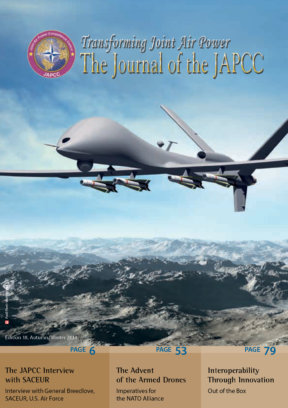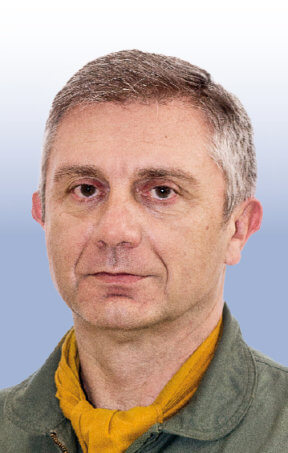Introduction
From the beginning of history, every society has sought to attain military supremacy over their potential rivals. It has always been recognised that military power was needed to protect territories and interests from competitors or to otherwise enlarge dominions. In many instances, this supremacy was attained by using all available national capabilities, including its pool of scientific knowledge, industrial capacity and natural resources. The focus on military development was considered the highest priority within the national policy when a real or potential threat, risk or enemy became evident. In these cases, all efforts in a country or nation are used and focused in this direction.
This battle to attain military supremacy over other potentially enemies has become a genuine race. Nations currently seek to develop better weapons and capabilities faster than their competitors. In all these new inventions, a common denominator is present: science and technology. Military forces appreciate having a technological advantage over their opponents because this unbalanced situation gives them freedom of action in most military scenarios. Conversely, this advantage is not absolute or unlimited and normally depends on the given situation or scenario. Military history is full of anecdotes where a technological advantage was insufficient in assuring success in a campaign or scenario.
Dependence on Technology
Technology surrounds us, not only in the military environment but also in most facets of our lives. We undoubtedly realise that all these technical advantages produce not only benefits but also dependencies or over-reliance on them. This is because people adapt their lives quickly to the services and convenience provided by technical advances. It is almost impossible to imagine a world without cars, cellular phones or computers.
This is an elementary example to explain the ease with which humans become dependent on technology. There are many other examples in the military environment such as military C2 systems, communications, computers, mission planning, etc. Are modern armed forces also real or potential victims of dependency on capabilities attained through the use of new technological developments? If so, must we then forego these technological advantages? Or perhaps, is a certain balance possible? And how is this balance determined?
Because it would be difficult and counter-intuitive to surrender these advantages, the over-reliance on technology could be a potential source of vulnerability and as such, must be recognised and mitigated. Therefore, applying this hypothesis to existing NATO concepts, are NATO and NATO member countries aware of this concern? Are the most fragile and key elements in NATO’s technological nodes identified and suitably protected? Where are the weakest links in the chain? Are C2 systems in NATO adequately protected against cyber-attacks?
Since space assets such as satellites are not part of NATO’s inventory, but rather managed by individual countries and in many cases by commercial companies, how can NATO protect its C2 network? What if these satellites must be switched off for commercial or strategic reasons? How will this reduction in available capability be mitigated?
On the other hand, another issue to consider is the price of technology. Undoubtedly, technology is becoming increasingly more expensive. Vast sums of money must be spent in R&D to maintain existing capabilities, which fewer countries are able to afford. Because of this, the differences in technology between countries could generate interoperability issues and consequently become a limiting factor for NATO.
Unmanned Aircraft Technology
Unmanned military assets like UAS or UCAS have been considered a highlight of military technology in the last few years. Understanding the term ‘unmanned’ to mean remotely operated, these vehicles are only truly unmanned when they are operating in an autonomous or pre-planned operating mode. The advantage of operating military unmanned vehicles from a control centre located outside of the operational area has just recently become a reality. Other advantages, such as reduced risk for aircrew, longer endurance, and increased pay loads capabilities, can be realised through the use of unmanned aircraft technology.
These capabilities instantaneously dazzled many analysts that rushed to predict that in a couple of decades all the military aircraft would be unmanned. Unfortunately, reality is smashing these optimistic predictions. But, where were the errors made? Were they unaware of the limitations and weaknesses of unmanned vehicles, blinded only by the advantages of these new systems? Some of the main weaknesses of these vehicles such as the reduction in aircrew situational awareness (SA) in some instances or limited flexibility in certain scenarios, limited defensive capabilities in complex threat environments and the dependence on satellites links to control the system may not have been considered in these predictions. This is another example of being overly enthusiastic based on the mirage of technology. The problem will be exacerbated when traditional capabilities are neglected and discarded in favour of the significant advantages these new technologies may provide.
Looking at the controversy between unmanned versus remotely operated / vehicles,1 it is necessary to clarify the terms ‘autonomous’ versus ‘automated’. Current UAS / UCAS / UAV’s are remotely operated, because these vehicles almost always have a human controlling the actions of the vehicle. Only when an autonomous mode is activated (usually as a result of some type of malfunction), are these vehicles considered unmanned. On the other hand, should an ‘autonomous’ mode be considered merely as another mode of operation in which UAS / UCAS / UAV’s work in accordance with a pre-planned pattern? Since it is incapable of determining a proper course of action within a given threat scenario without human interaction, is it just a less flexible mode of operation?
UAS are currently considered a good complement to manned aircraft in missions where UAS strengths are maximised and their weakness are mitigated or resolved. Additionally, although the use of UAS has grown exponentially during last few years, it is believed an even greater use of UAS will continue in the future. Unmanned vehicles are currently under development that are faster and better protected than current models. They will have better and more sophisticated sensors with robust communications systems that will improve connectivity between the operator, the UAV and the customer. This will drastically improve operator situation awareness and flexibility. In other words, it is absolutely imperative to remove or reduce the figurative distance between the operator and the vehicle to the maximum extent possible.
Another issue to be considered is the existing debate regarding the moral and ethical implications of ‘killing at a distance’. Many opinions and questions have been put forth related to the responsibilities of these types of operations, to include the issues of collateral damage produced by unmanned machine and the limited risk to the operators. If decision makers and planners see them as a way to eliminate the risk of military forces, does it make a military option seems more attractive? To whom does the responsibility fall when operating UAS in an autonomous mode? Is it a way to save lives on both sides of a conflict? Is it ethically acceptable to prosecute a war in which only the opposing forces are killed?
It is certain that UAS will be increasingly included in future military operations as they continue to evolve. Since military planners will rely increasingly on the capabilities this technology provides, will they fall into the traps mentioned above? Will they be victims of the illusion of new technologies? Could these technologies go from being ‘the key to success’ to a factor in future defeat?












